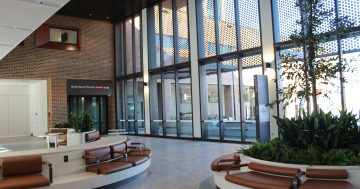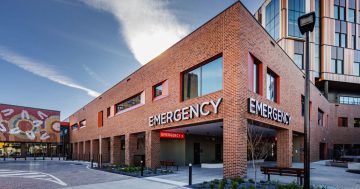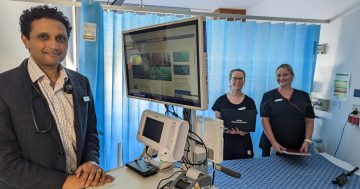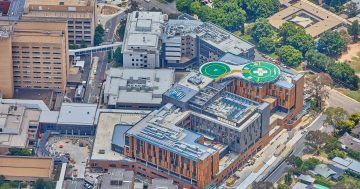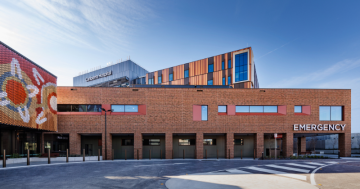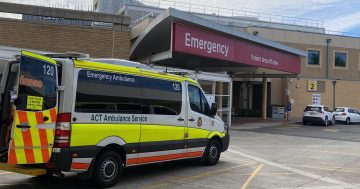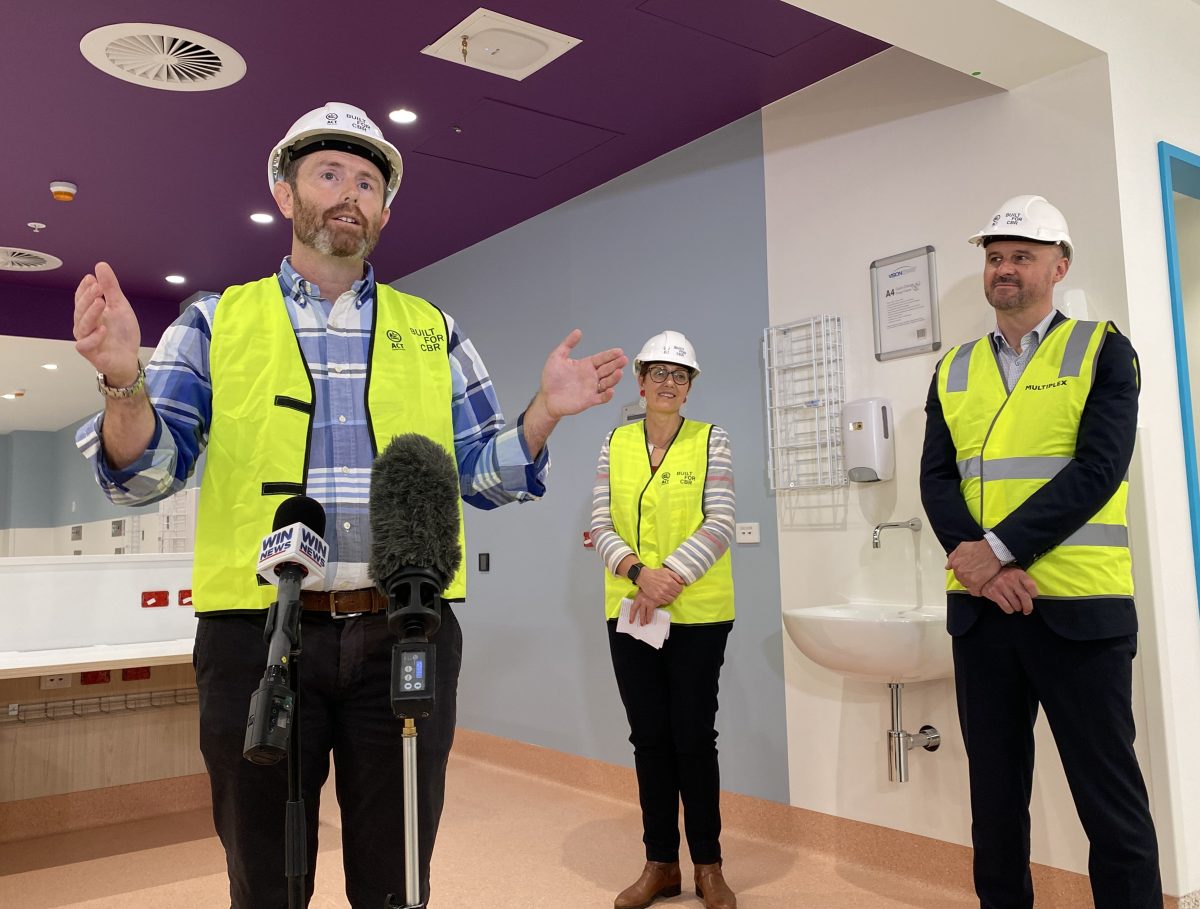
Emergency Department clinical director Sam Scanlan (front) hopes the new services will streamline people’s ED trips. Photo: Claire Fenwicke.
Canberra Hospital is set to benefit from an additional $44 million in funding, with most of the money going towards the new emergency department to be opened in August.
The money comes from the upcoming budget review. An extra $17 million will be used to deliver more nurses, doctors and admin staff to run an extra triage point specifically for ambulances.
It will also help staff the dedicated Behavioural Assessment Unit and expand the Medical Emergency Team across the larger acute care footprint of the hospital campus.
As these services were thought of during the design process of the Critical Services Building, as known as Building 5, no space will be sacrificed to make them a reality.
Health Minister Rachel Stephen-Smith said this was about making the improvements employees had pointed out the new ED needed.
“There’s a really substantial recruitment effort underway right across CHS [Canberra Health Services], particularly in the context of opening Building 5 and completing this stage of the Canberra Hospital expansion,” she said.
“We are talking about a bigger footprint, so more wards people. More support staff [are also needed] to ensure that our clinical staff can focus on the things they do really well.”
The ACT Government had committed to an additional 400 health professional positions this term.
This money is on top of more than $122 million from the 2023-24 ACT Budget to commission and operationalise the new building.
Specifically looking at this announcement, there will soon be four bed spaces for patients coming off ambulances to be triaged in privacy and a separate ‘docking’ area where their stretchers can be placed if beds aren’t available straight away.
This compares to the more informal triage space for stretchers from ambulances currently in use and will hopefully mean fewer ambulance patients waiting in busy corridors.
ED clinical director Sam Scanlan said this would help streamline the two main entry points for people arriving at the department.
“Having those two dedicated teams of triage staff will help to reduce that initial time when people are waiting in a queue before they actually have their triage occur, and it will then help in making sure we’re getting them to the right location,” he said.
“We now have various areas that we will stream[line] patients to get the most appropriate care and be in the most appropriate location.”
The Behavioural Assessment Unit will be utilised, for example, for people who may be presenting with an acute psychological crisis or presenting with the impacts of intoxication, to both give them more privacy and space to be properly assessed and to make the ED safer for general patients.
The expanded Medical Emergency Team will consist of more advanced practice nurses and a new nurse practitioner position to support critically unwell patients right across the hospital.
It’s hoped all these services will improve the ED’s model of care and the experience of all patients who walk through its doors.
“We’ve seen significant improvements in the flow of patients coming through the hospital, particularly in the last six months, and we’re really hoping to build on that and sustain that moving forward,” Dr Scanlan said.
There’s also an extra $27 million in funding to focus on professional development and education and to hopefully improve the retention and attraction of nurses, midwives and allied health professionals.
The money will help deliver initiatives currently under negotiation as part of enterprise bargaining agreements, including $2000 over the life of the agreement for nurses and midwives to undertake education and an additional $750 a year for professional development.
Ms Stephen-Smith said this was about delivering what staff had told them they needed.
“They wanted to be supported and encouraged, and engaging in professional development, and to have that recognised in their enterprise agreement,” she said.
“We want to ensure that we’re not only recruiting people to the ACT [but] that we’re retaining them here and then we’re supporting them.”
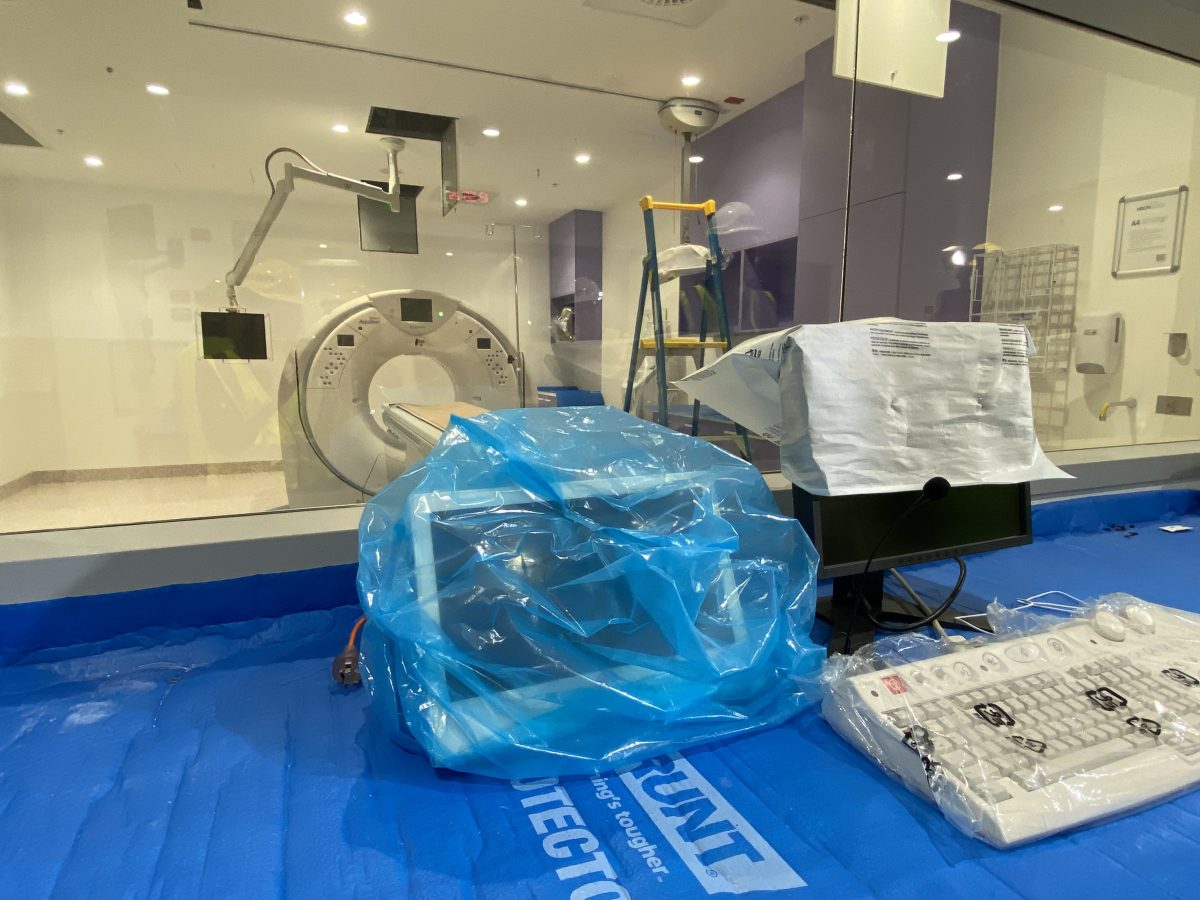
There’s still plenty of equipment to be installed and unwrapped ahead of the Critical Services Building’s opening later this year. Photo: Claire Fenwicke.
Dr Scanlan said the final preparations with staff were underway as the opening of the Critical Services Building drew nearer.
“We’re coming to a pretty amazing building with an increase in footprint, but our whole team are moving house, which means our whole team will be working in an emergency department they’ve not worked in before,” he said.
“[One focus] is now working through an education plan to make sure that we’ve got access to the building so the team can come [in], we can run simulation scenarios, get used to the layout and get used to how we’re operating in the department.”
“It’s exciting but daunting at the same time.”













